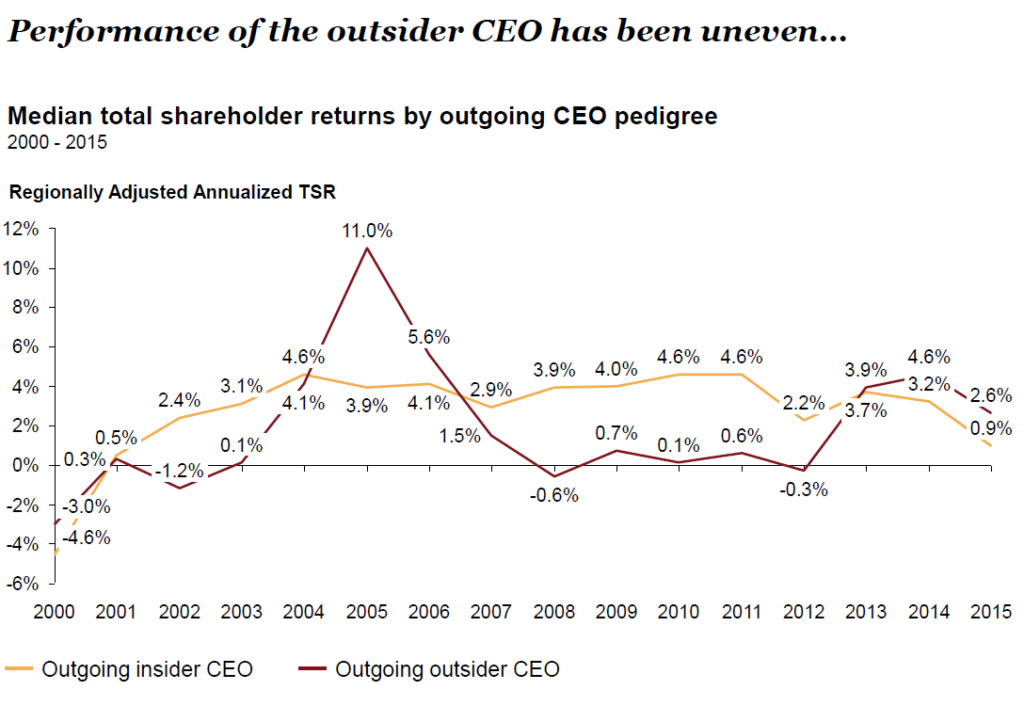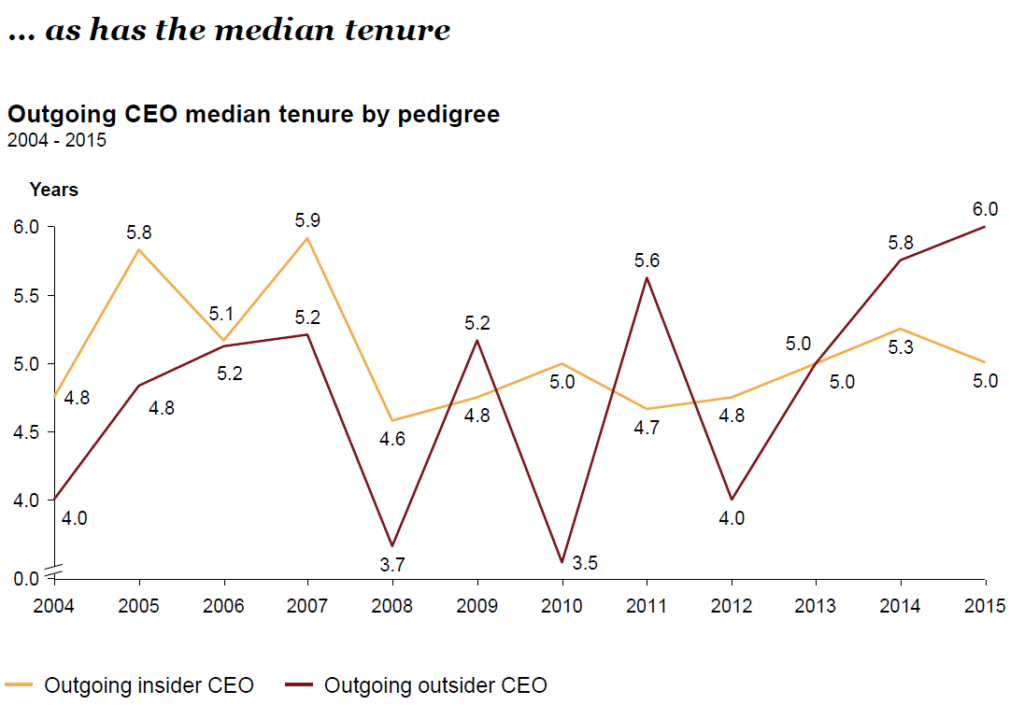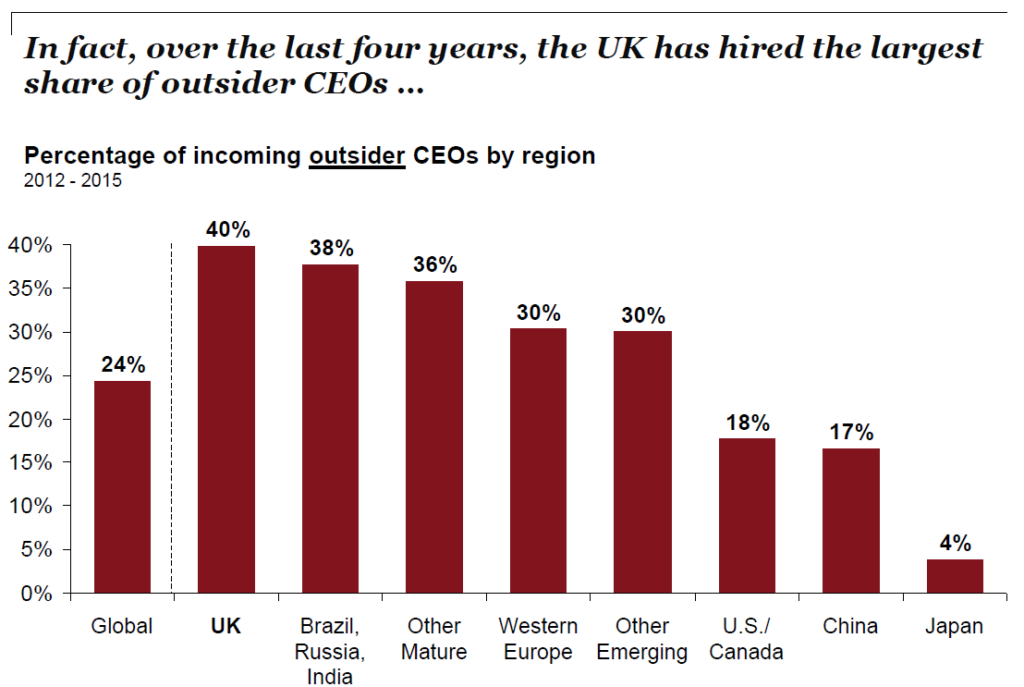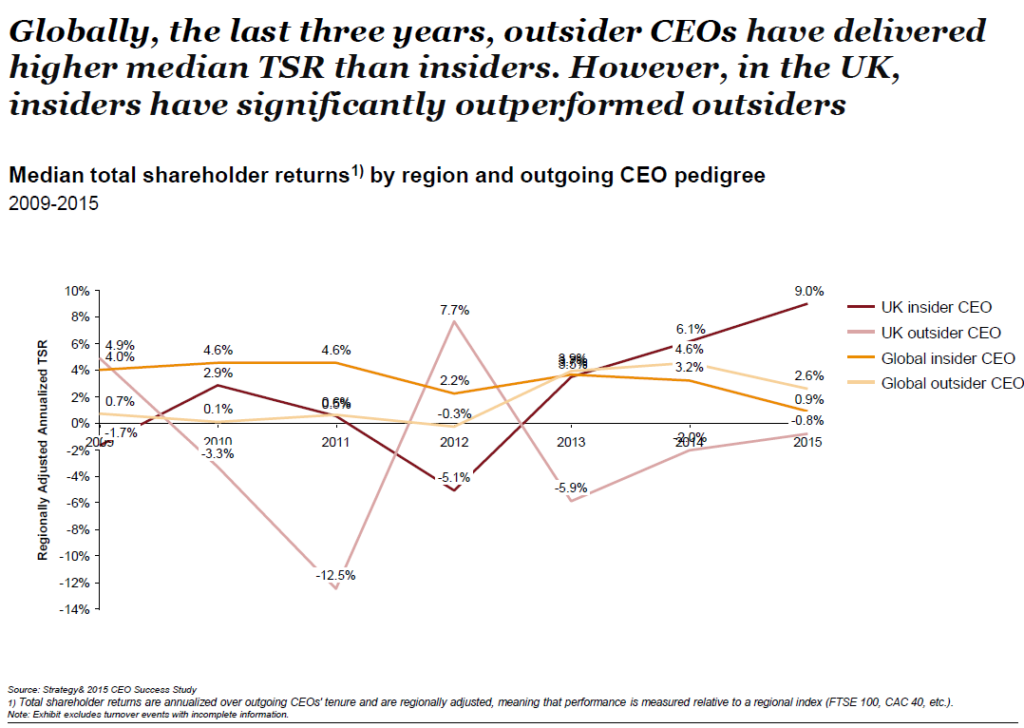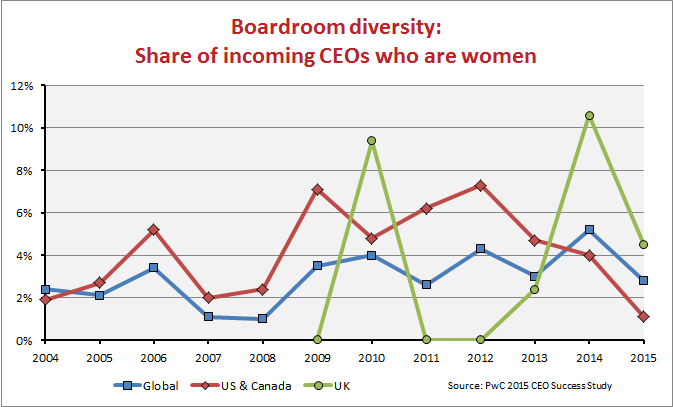Why the taboo of succession planning is leading global firms to reject internal CEO candidates
- 5 Min Read
The graphs that reveal why the world’s biggest companies are wrong to increasingly turn to external CEOs instead of promoting from within.
- Author: Owain Thomas
- Date published: Apr 20, 2016
- Categories

The world’s biggest companies are increasingly turning to external candidates to lead them instead of promoting from within.
However, outsider CEOs typically see more variable and poorer performance and are more likely to be forced out as a result than their home-grown colleagues.
Findings from PwC Strategy&’s CEO Success Study suggested (see charts) that internal succession planning was becoming a much lower priority around the world, with the UK taking the lead.
“Succession planning is a taboo subject in most companies,” PWC Strategy and Consulting partner Viren Doshi told HRD Connect.
This, he suggested was because “you’re differentiating people publicly within the organisation”.
“How do we grow that person?” he asked. “It has to be done in a subtle way.”
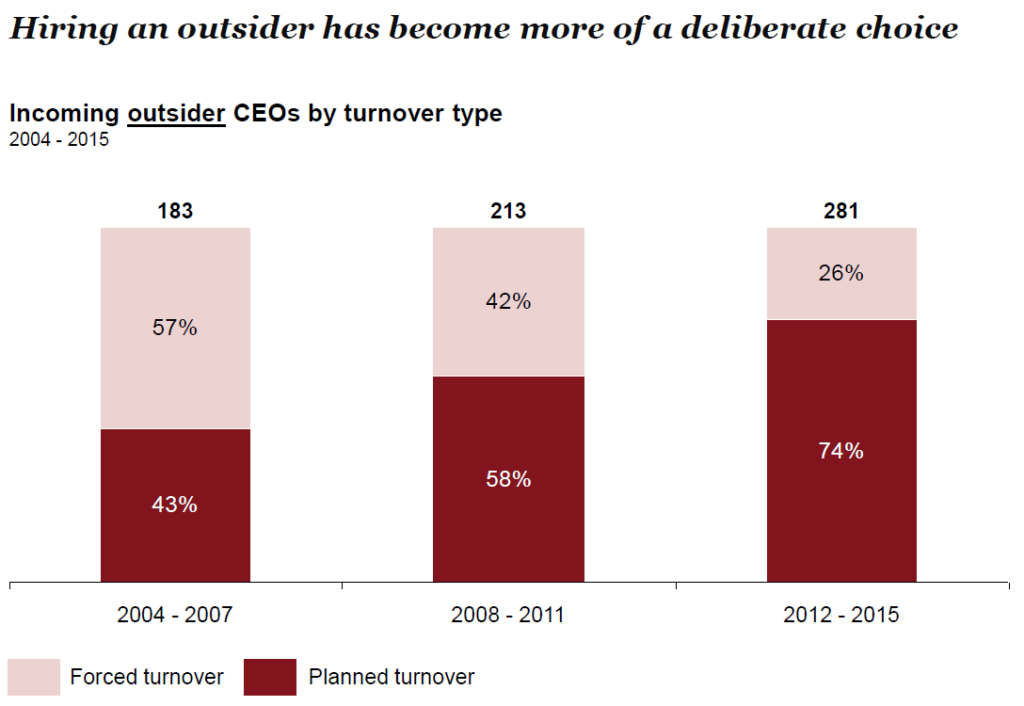 (all charts courtesy of PwC Strategy&)
(all charts courtesy of PwC Strategy&)
Given that it can take new CEOs two to three years to understand the organisation’s culture and values, Doshi noted that there was “a bit of concern that companies were very quick to hire from outside”.
“We have a question mark about what role HR plays in succession planning. I don’t want to put all the blame on HR because it’s also down to the board and CEO,” he said.
“Where it’s done well is where it’s part of the CEO’s performance measure.
“The board should influence the decision and should reach out into the capability and talent pipeline, but this is another part of the decision because the pipeline has not been built,” Doshi added.
Underperforming
The PwC results chimed with those presented by Willis Towers Watson at the HR Directors Business Summit in February.
The consultancy revealed its analysis found that promoting senior leaders from within was cheaper and produced almost identical corporate performance.
PwC’s Doshi emphasised that where companies had made succession planning a priority they had reaped the rewards – noting Royal Dutch Shell as one such example.
Shell’s executive VP of HR for downstream and Europe operations Gerard Penning told HRD Connect how the energy giant had overhauled its leadership strategy and focused on growing leaders from within.
Internal senior succession trumps external recruitment
Leading the charge
UK-based firms in particular have proved increasingly reluctant to promote from within.
Last year external executives became the majority of their CEO hires (58%) – a record high for the UK since the study started in 2004.
This went against the global norm, where the majority of organisations continued to promote people already working at the company to the CEO position. Only 23% of firms replacing their CEO appointed an external hire last year.
However it emphasised a longer-term trend where British companies hired the largest share of outsider CEOs (40%) over the last four years compared to all the major regions identified by the research.
This figure is 10 percentage points higher than neighbours in Western Europe, 16 percentage points higher than the global average, and more than double the rate in the US and Canada.
Doshi noted this was a worrying situation for UK firms who “do not have a good succession plan, are very quick to hire from outside or are not prepared to take time to develop from inside. Then they are very impatient to see results.”
This was highlighted by CEO turnover also being at a record high in the UK, at 19.3% in 2015 (up from 18.3% in 2014). Only Brazil, Russia, India and Japan had a higher CEO turnover rate than the UK last year.
The results are particularly galling when considering that internal hires at UK firms have – outperformed their externally sourced colleagues for five of the last seven years. However both methods have provided volatile results during this period.
It is notable as well that business performance has improved for outside hires around the globe over the last three years, however the longer term shows internal hires generating better results more consistently.
Gender disparity
The analysis of the world’s 2,500 largest public companies by market capitalisation also revealed that women were still underrepresented at the highest level.
Just 2.8% of incoming CEOs around the world were women – almost half the level of 12 months earlier (5.2%).
However, perhaps most concerning in this area was the finding that female CEOs were more likely to be hired from outside of the company than male CEOs – indicating internal pipelines are even more blocked for women.
Nearly a third (32%) of all incoming and outgoing female CEOs from 2004 to 2015 were outsiders compared to just 23% of male CEOs.
PwC UK consulting leader Ashley Unwin noted that great progress had been made getting more women into board roles.
“But our research reinforces why that momentum needs to be maintained at the executive level,” he said.
“Companies should be challenging themselves on why they don’t have more women poised to take on executive level roles. They should work to identify and build their future pipeline of women leaders, and continue to monitor their progress.
“The executive level is where women and diverse leadership teams can make a tangible difference to the culture and management of a business,” he added.
How and why Shell recalibrated its leadership development

